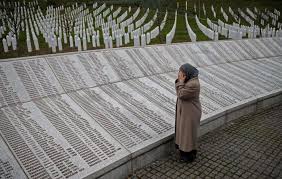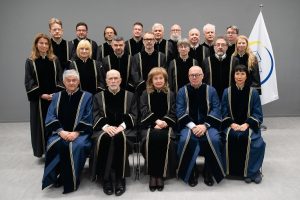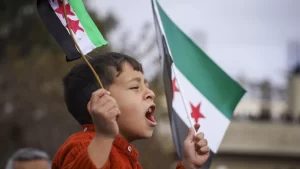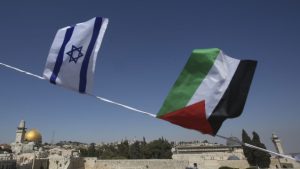
Thirty years after the Srebrenica genocide. The victims’ legal odyssey
Thirty years after the Srebrenica genocide. The victims’ legal odyssey Written for the componente: Armed conflicts Thirty years after
Written for the component: Peace Building and Transitions

Introduction
In today’s complex global conflict landscape, where violence ranges from localized skirmishes to full-scale wars, classifying conflicts under International Humanitarian Law (IHL) has the potential to advance effective peacebuilding beyond its original goal of applying relevant laws. Broad definitions of violence can homogenize conflict dynamics, resulting in generalized solutions that fail to address unique challenges during peacebuilding efforts. For example, the adoption of standard peacebuilding techniques in Afghanistan overlooked the country’s intricate tribal and regional diversity, resulting in inefficient governance and exacerbating local frustrations. This failure emphasizes the significance of varied methods that are suited to the unique sociopolitical and historical elements that shape each conflict. Conflating localized insurgencies with large-scale interstate wars may conceal the diverse sociopolitical and historical causes that shape each conflict. This lack of clarity frequently leads to one-size-fits-all tactics, as evidenced by the disparate outcomes of peacebuilding efforts in Afghanistan and Iraq. Interventions must be tailored to the specific character and causes of violence in order to achieve long-term peace.
The conflict classification process under IHL could provide a strong framework for addressing these issues. By distinguishing between different forms of armed conflicts, IHL can assure context-specific responses, strengthen justice and accountability procedures, and ease the strategic execution of humanitarian and diplomatic initiatives. This systematic method provides a foundation for addressing the complexities of modern conflict and peacebuilding initiatives.
IHL offers a clear classification of armed conflicts that are governed by separate legal frameworks. This distinction is significant because different IHL rules apply to international armed conflicts (IACs) and non-international armed conflicts (NIACs). For example, IACs are subject to the entire scope of the Geneva Conventions and its Additional Protocol I, which govern the treatment of wounded sick and shipwrecked, prisoners of war, civilian protection, and permissible methods of warfare. In contrast, NIACs are primarily governed by Common Article 3 and Additional Protocol II, which impose a more limited set of requirements, reflecting the challenges of internal conflicts.
IHL defines IACs as conflicts between two or more sovereign nations. These conflicts include declared wars as well as any other armed conflict between governments, even if neither party recognises the state of war. They also include situations in which a state party’s territory is partially or totally occupied, even if there is no armed resistance (Common Art. 2 of the Geneva Conventions), as well as conflicts involving struggles against colonial domination, alien occupation, or racist regimes exercising self-determination (Additional Protocol I, Art. 1 para 4).
Non-international armed conflicts (NIACs) take place within a state and involve organised non-state actors. NIACs are characterised by conflicts between government troops and armed insurgent organisations, or between different insurgent groups. Such conflicts endeavour to grab political power, acquire autonomy, or secede to form a sovereign state. Oppression, human rights violations, political failure, and resistance to authoritarian control are common triggers for these wars.
Internationalised NIACs emerge when external state actors intervene in a non-international conflict. These scenarios are classified according to the involvement of external forces. For example, if third-party armed forces assist rebels without the consent of the government, the conflict becomes an IAC. However, if third-party forces help state authorities combat rebels, the conflict remains an NIAC. In situations where third-party troops act independently yet alongside rebels, both IAC and NIAC aspects coexist.
Lastly, internal disturbances and tensions, such as riots or isolated incidents of violence, fall below the threshold of armed conflict and are thus outside the scope of IHL. Internal disturbances involve significant confrontations within a country that include acts of violence, while internal tensions may arise from political, religious, racial, social, or economic grievances, sometimes as sequels to conflicts or disturbances.
Under IHL, these classifications are critical in determining the applicability of core legal instruments such as the Geneva Conventions, Additional Protocols, and Customary International Humanitarian Law principles, which together form the foundation of IHL’s conflict-resolution framework. These documents provide comprehensive criteria for protecting civilians, ensuring humane treatment of detainees, and regulating hostilities in order to reduce the negative effects of conflict. By outlining obligations for all parties, they provide a framework for protecting fundamental rights and supporting international accountability mechanisms.
A Threshold-Based Approach to Categorize Violence for Peacebuilding
A threshold-based method to categorising violence for peacebuilding, modelled after the IHL’s armed conflict classification, identifies multiple categories of violence based on their extent and systemic impact. This approach is especially significant in modern conflicts, as the nature of violence varies greatly and necessitates unique methods. For example, in a complicated conflict situation like the Syrian civil war, using a threshold-based categorisation could have helped international actors distinguish between localised humanitarian needs and large-scale war crimes, assuring focused interventions and resource allocations. This approach is especically useful because it assures targeted responses that address specific patterns of violence, allowing for more accurate interventions and resource allocation.
Hence, acts of violence may be classified based on its threshold for peacebuilding efforts as the following.
Relevance of Conflict/Violence Classification to Peacebuilding
The categorising of violence and conflicts offers legal clarity and a basis for pursuing crimes such as war crimes, crimes against humanity, and genocide. For example, classifying the Russia-Ukraine conflict as an IAC guarantees that the Geneva Conventions and other relevant laws are applied, allowing international bodies such as the International Criminal Court to investigate and prosecute alleged war crimes. Legal clarity promotes trust between opposing parties and the international community, establishing the framework for discussions and long-term peace agreements.
Conflict classification also allows for targeted humanitarian interventions based on the nature and intensity of violence, such as determining the right of access for impartial humanitarian organisations like that of the International Committee of the Red Cross to provide humanitarian aid to the vulnerable. For example, the dual classification of the Israel-Palestine conflict (IAC and NIAC) enables different approaches, such as providing targeted humanitarian help in Gaza and tackling cross-border conflicts. Compliance with IHL rules, such as the development of safe zones and evacuation corridors, has proven critical in humanitarian operations, as demonstrated in Russia and Ukraine’s response to civilian needs during active conflicts.
Furthermore, classification reveals systemic inequalities, such as economic exclusion and unequal resource distribution, allowing post-conflict societies to prioritise comprehensive reforms. For example, in Iraq, conflict classification revealed discrepancies in governance and resource distribution, which guided measures to promote inclusive political and economic systems. By addressing the core causes of violence, structural changes help to promote an egalitarian society and reduce conflict recurrence.
Classification also influences the design and implementation of transitional justice mechanisms including truth commissions, reparation programs, and localised judicial processes. For example, South Africa’s Truth and Reconciliation Commission (TRC) effectively addressed apartheid-era human rights violations by combining responsibility with community reconciliation. Similarly, Rwanda’s Gacaca courts took a localised approach to justice, including communities in the prosecution of genocide-related crimes, encouraging reconciliation, and rebuilding social trust. Unlike formal legal systems, which frequently adhere to rigorous rules and standardised procedures, localised judicial processes are customised to the cultural and societal settings of the impacted communities. These approaches prioritise restorative justice and reconciliation by incorporating local traditions and practices, which allowed for popular participation in addressing genocide-related crimes. Such approaches are critical for restoring community trust, resolving disputes, rebuilding social cohesion in post-conflict communities and above all helping in peacebuilding. These approaches demonstrate how transitional justice mechanisms can link legal frameworks with societal healing and peace-building.
Internationalized conflicts underscore the interconnectedness of regional stability and the importance of multilateral efforts. Such efforts include coordinated responses by regional organizations like the African Union or European Union, joint military peacekeeping operations under the United Nations, and multilateral sanctions regimes to curtail external interference or support for armed groups. These cooperative actions exemplify how international collaboration can effectively address the complexities of cross-border violence. By fostering multilateral diplomacy, conflict classification strengthens global accountability frameworks, reinforcing norms that govern international relations and conflict resolution.
Further, memory, translation, and dialogue are key elements of peacebuilding, and conflict classification under IHL considerably improves their effectiveness. Memory involves upholding historical narratives and acknowledging crimes in order to create healing and prevent recurrence. For example, in Bosnia, the designation of violence as ethnic cleansing made it easier to create memorials and educational efforts that fostered healing and historical understanding. Similarly, programs such as Stolpersteine in Europe, which honours Holocaust victims, emphasise the necessity of instilling collective memory in the public mind.
Translation ensures that global norms and legal frameworks are customised to local cultural and societal circumstances, resulting in broader acceptance. Through conflict classification, institutions such as Rwanda’s Gacaca courts have successfully combined traditional customs with IHL principles, resulting in localised justice systems that promote reconciliation and confidence.
Dialogue, facilitated by the legal clarity afforded by classification, creates platforms for resolving disputes and increasing mutual understanding. For example, the designation of the South Sudan conflict as a NIAC facilitated structured discourse between local and foreign parties, resulting in shared narratives important to peacebuilding. Classification thus gives a framework for efficiently implementing these features, customising peacebuilding interventions to the unique dynamics and demands of post-conflict contexts.
Integrating memory, translation, and dialogue with conflict classification under IHL not only strengthens the legitimacy of peacebuilding processes but also provides a strategic framework for dealing with the complexity of post-conflict rehabilitation and peacebuilding.
Conclusion
The classification of conflicts in accordance with IHL goes beyond a mere procedural task; it serves as an essential framework for promoting enduring peace and navigating the intricate realities of contemporary conflict dynamics. The provision of a structured framework through such classification guarantees legal clarity, promotes accountability, and facilitates focused peacebuilding initiatives. This process empowers both local and international stakeholders with the necessary tools to tackle the underlying causes of violence and to formulate just solutions that correspond with the distinct needs of the communities impacted. For instance, classification enhances the formulation of customised humanitarian interventions, the establishment of justice frameworks, and the orchestration of multilateral collaboration to address and resolve conflicts.
The profound implications of classifying conflict and violence reside in its capacity to guide targeted strategies, uphold justice, and create resilient frameworks for peacebuilding. By examining the unique dynamics of each conflict, classification establishes a basis for fostering resilient societies and encouraging sustainable, long-term stability. This methodology guarantees that peacebuilding initiatives are not merely effective but also encompass inclusivity, adaptability, and a profound commitment to the tenets of justice and human rights, rendering it essential for the attainment of enduring peace.
The opinions expressed here do not represent the stance of the CIV or the entities to which the authors are or were affiliated.
Sanoj Rajan is a Professor of International Law and Human Rights and is currently a Distinguished Professor of Law at Zhejiang Gongshang University, Hangzhou, China and a Peace Fellow at International Christian University, Tokyo. His academic affiliations also include being an Affiliate of the Harvard Humanitarian Initiative at Harvard University, Massachusetts, USA, and a Visiting Professor at the Indian Society of International Law, Al-Farabi Kazakh National University, Almaty, and the International Christian University at Kinshasa, Congo..

Thirty years after the Srebrenica genocide. The victims’ legal odyssey Written for the componente: Armed conflicts Thirty years after

The necessity of public and governmental support for transnational justice: the case of the Kosovo Specialist Chambers Written for the

Syria’s Transitional Government and International Law Written for the component: Peace Building and transitions Syria’s Transitional Government and International

An Unlawful Occupation of a Devastated Territory Written for the component:Armed Conflicts: Gaza “The dialogue of the occupying power

From Chaos to Clarity: How Conflict Classification Enhances Peacebuilding Written for the component: Peace Building and Transitions Introduction In today’s

Last Three Years Without serious consequence: Overview of the nature and Challenges of Russia’s War Against Ukraine under The International


To receive more information about our newsletter, please leave us your email address.